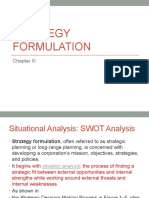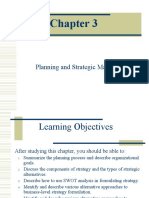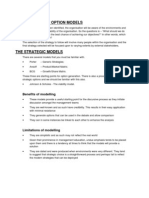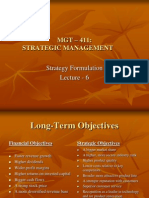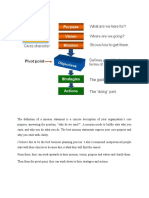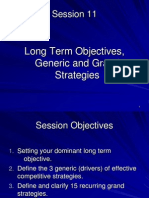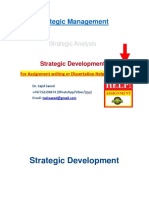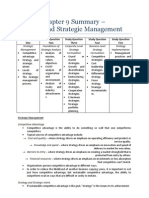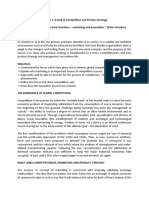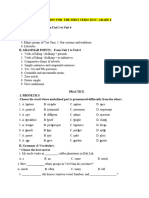0% found this document useful (0 votes)
105 views14 pagesModule 3 - Strategy Formulation
This document provides an overview of strategy formulation. It discusses business level strategy and corporate strategy, Porter's generic competitive strategies of differentiation, focus, and low cost. It also covers alternative approaches to strategy, being "stuck in the middle," industry lifecycles, and the four stages of an industry's lifecycle: introduction, growth, maturity, and decline. The key learning objectives are to understand strategic levels, environmental analysis, competitive advantage, portfolio analysis, and industry lifecycles in strategy formulation.
Uploaded by
Ronald Reagan AlonzoCopyright
© © All Rights Reserved
We take content rights seriously. If you suspect this is your content, claim it here.
Available Formats
Download as DOCX, PDF, TXT or read online on Scribd
0% found this document useful (0 votes)
105 views14 pagesModule 3 - Strategy Formulation
This document provides an overview of strategy formulation. It discusses business level strategy and corporate strategy, Porter's generic competitive strategies of differentiation, focus, and low cost. It also covers alternative approaches to strategy, being "stuck in the middle," industry lifecycles, and the four stages of an industry's lifecycle: introduction, growth, maturity, and decline. The key learning objectives are to understand strategic levels, environmental analysis, competitive advantage, portfolio analysis, and industry lifecycles in strategy formulation.
Uploaded by
Ronald Reagan AlonzoCopyright
© © All Rights Reserved
We take content rights seriously. If you suspect this is your content, claim it here.
Available Formats
Download as DOCX, PDF, TXT or read online on Scribd
/ 14



